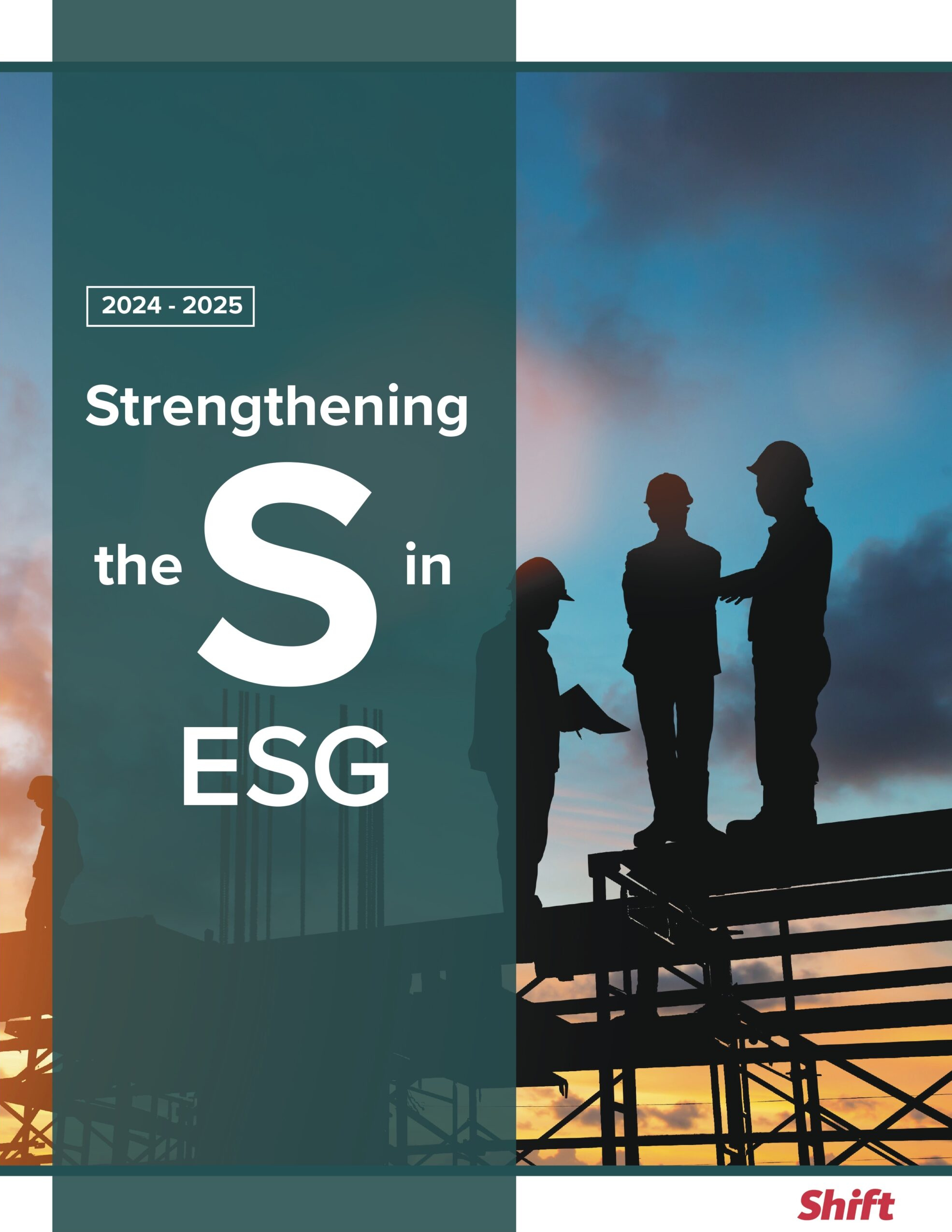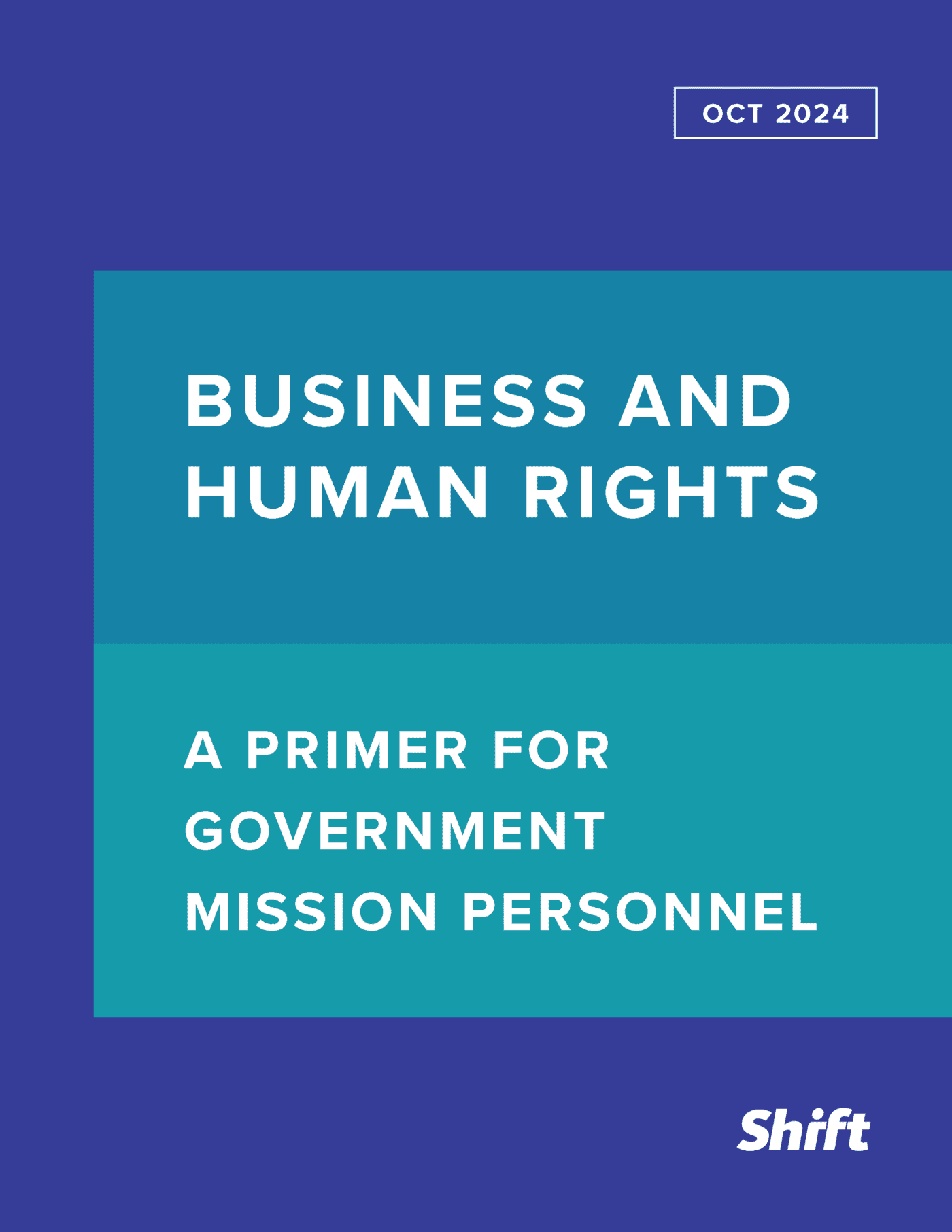This series captures the research findings from our analysis of 3073 social and governance indicators used in ESG data providers’ products or reporting requirements.[1] In our Guardrails, we focus first on the problems, spotlighting the types of indicators that offer minimal insight, or worse, incentivize poor practices. In our Guidelines, we then turn to indicators and metrics that are more robust, illuminating the pathway to better measurement. In our Thematic Deep Dives, we review ESG indicators related to specific issues (Occupational Health and Safety, Living Wage, Community-Focused Impacts). These deep dives identify pitfalls in indicator formulation as well as good practices that can inform better measurement of companies’ social performance on these topics.
Across the series, we will exemplify the good, bad and ugly of social indicators and metrics. Our goal is not to offer yet another set of competing indicators, but to share what we’ve learned about good indicator design in order to inform healthy debate, collaboration and innovation to improve the S in ESG.
This series is for everyone and anyone working to improve the ways in which we evaluate companies’ social performance.
Deep Dive Series
A series of deep dives evaluating better social indicators and metrics for occupational health and safety, living wage, and community-focused impacts.
3 resources
DEEP DIVE 01: Occupational Health and Safety Indicators

DEEP DIVE 02: Living Wage Indicators

DEEP DIVE 03: Community Focused Indicators
Guardrails and guidelines for indicator design
In climbing, guidelines are cords or ropes to aid passers over a difficult point or to permit retracing a course. Guardrails are physical barriers used to prevent people from falling from a height or from straying from a pathway or road into dangerous areas. So, both are put in place when the journey and terrain may be hard to navigate.
In the context of designing social indicators and metrics, we need both guardrails and guidelines, so we’ve structured our initial findings within the series around these.
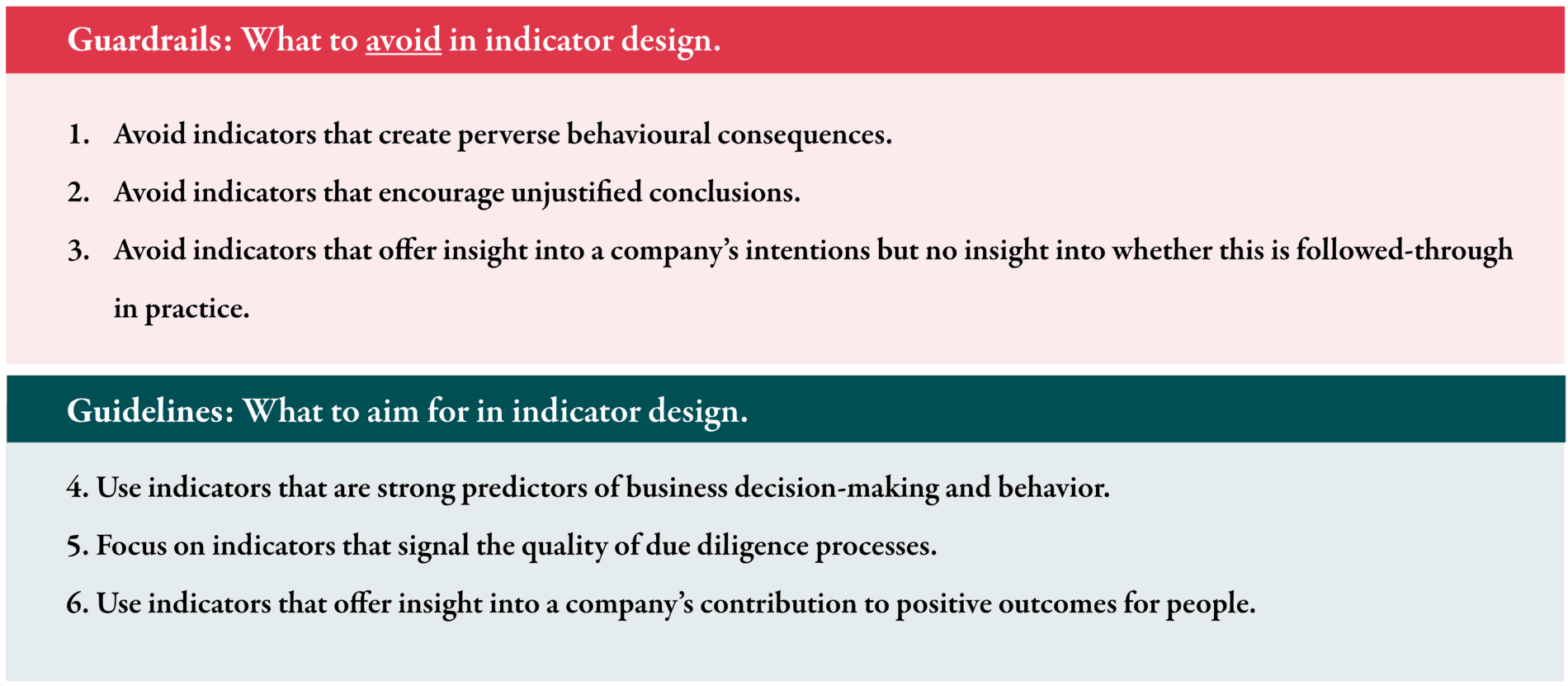
If we fail to reclaim the measurement of companies’ social performance as a tool to advance business respect for human rights, the S in ESG will remain divorced from the investor and business decisions that determine whether business is done with respect for people’s dignity. We hope this series can play a part in sustaining, advancing and scaling practices that lead to better outcomes for workers, communities and the people impacted by the use of products and services.
Guardrails
A series of guardrails for designing better social indicators and metrics.
3 resources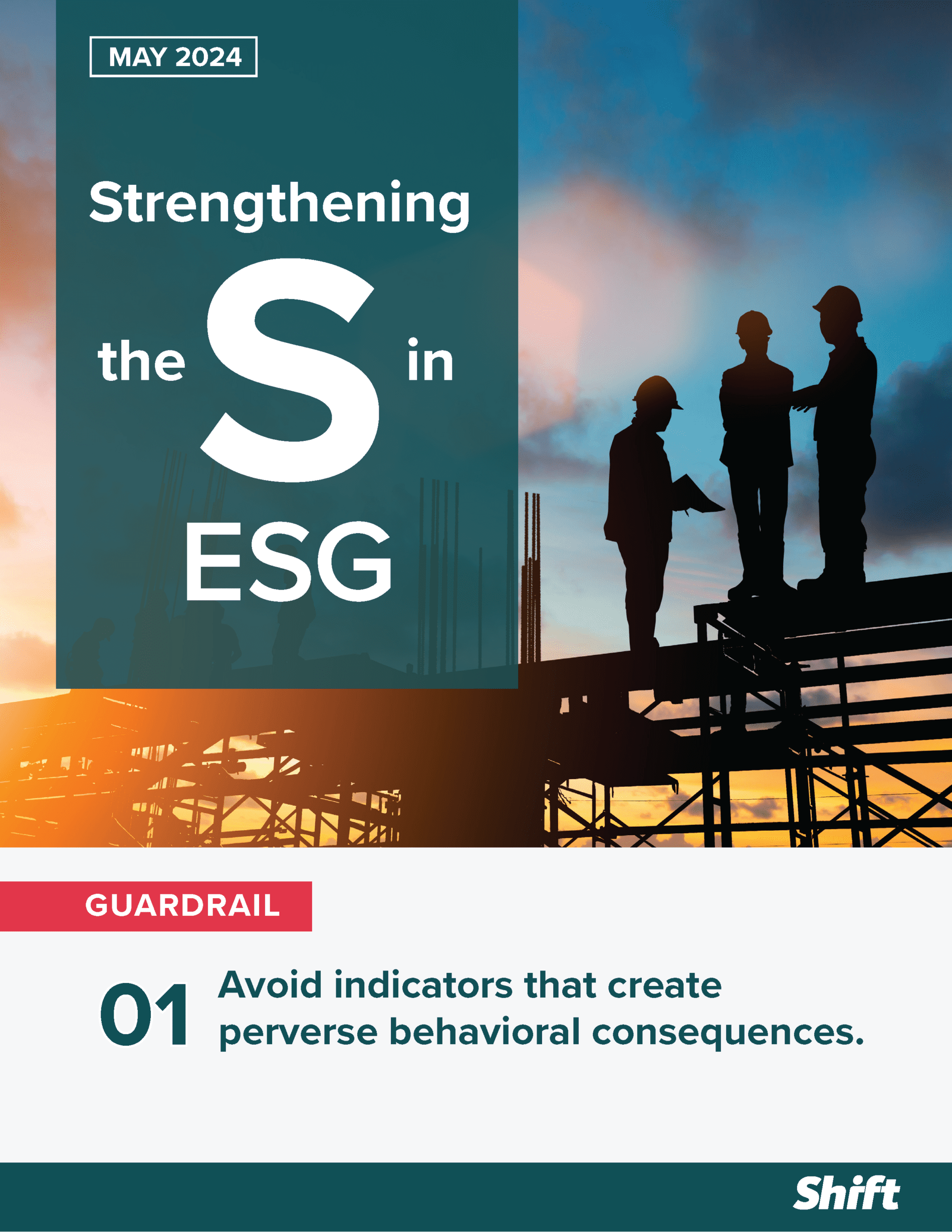
Guardrail 01: Avoid indicators that create perverse behavioral consequences.
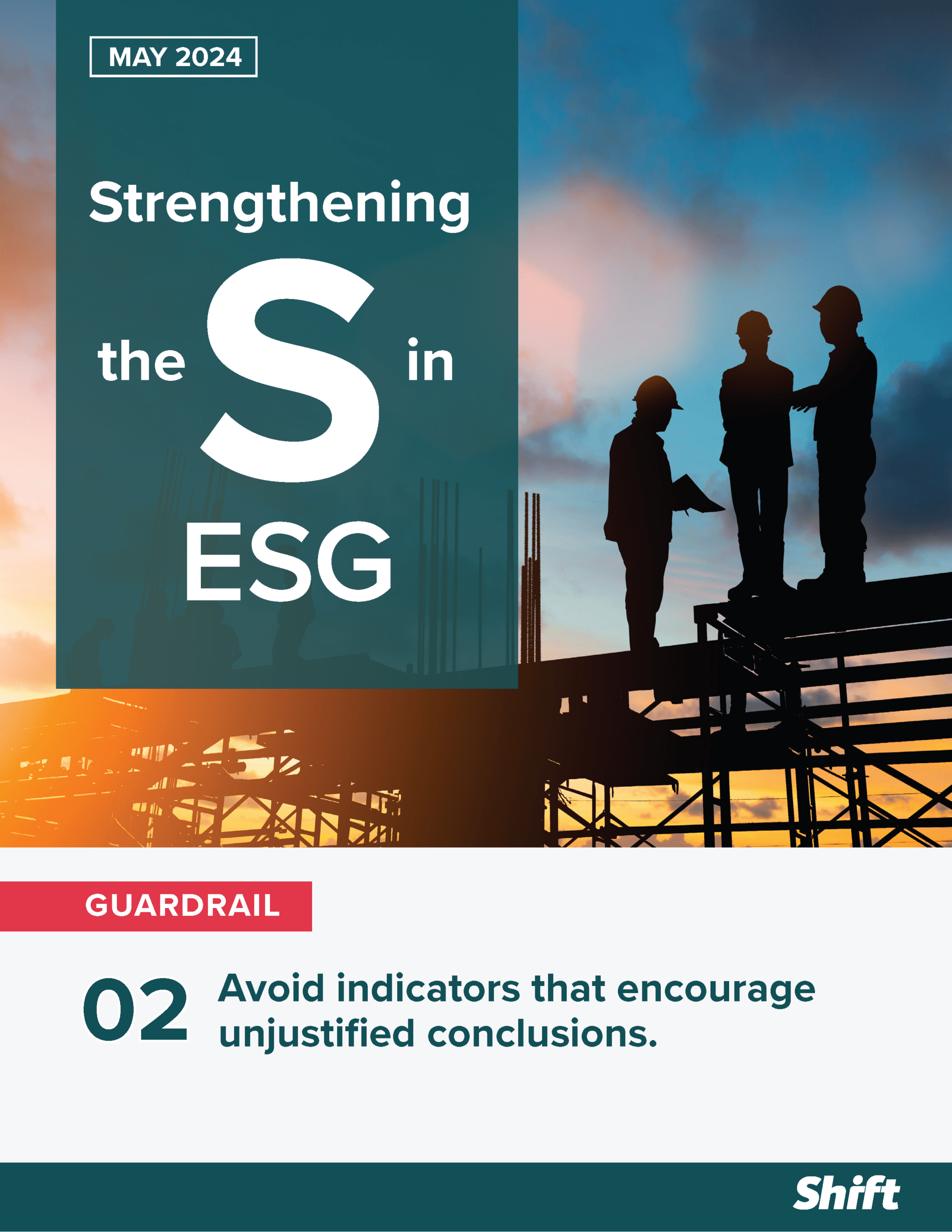
Guardrail 02: Avoid indicators that encourage unjustified conclusions.
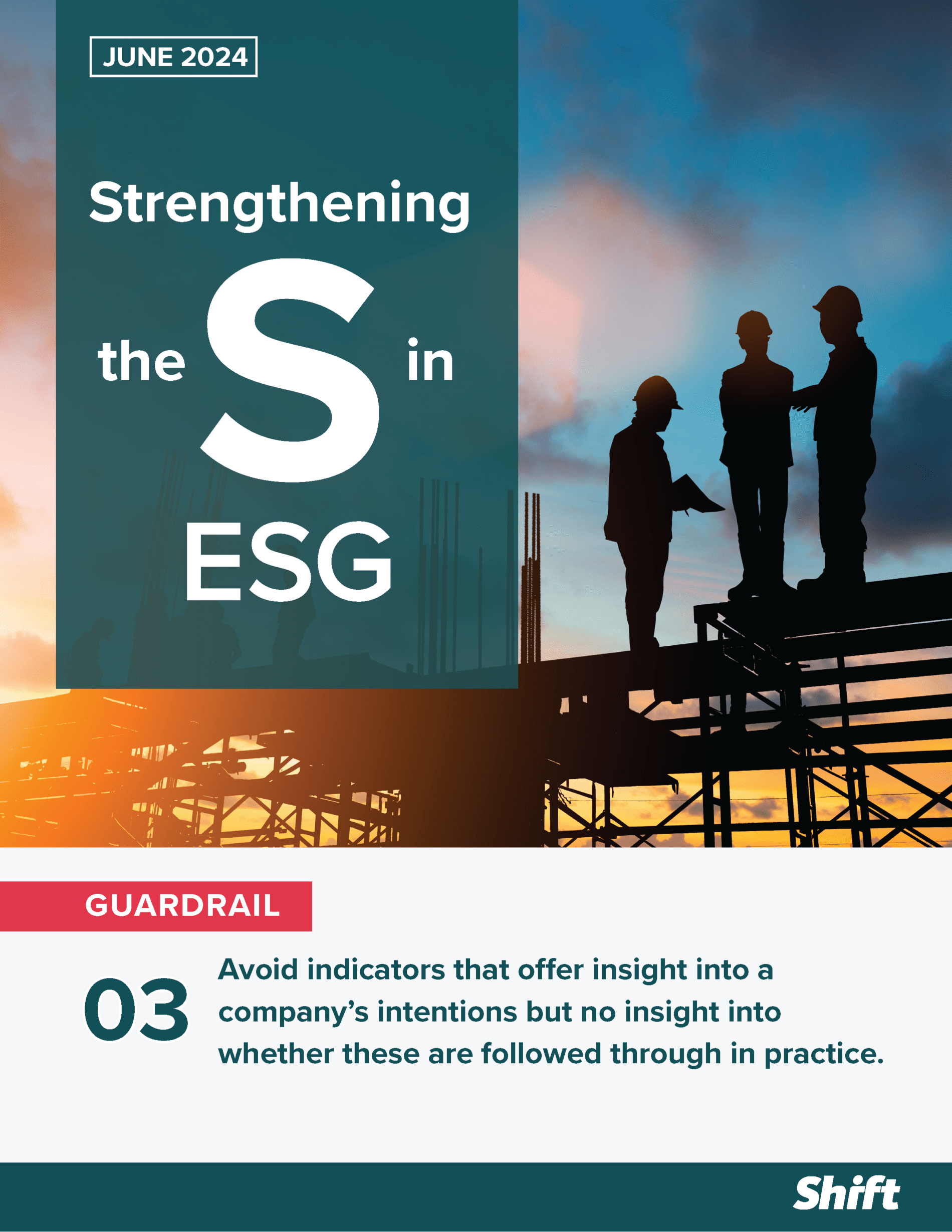
Guardrail 03: Avoid indicators that offer insight into a company’s intentions but no insight into whether these are followed through in practice.
Guidelines
A series of guidelines for designing better social indicators and metrics.
6 resources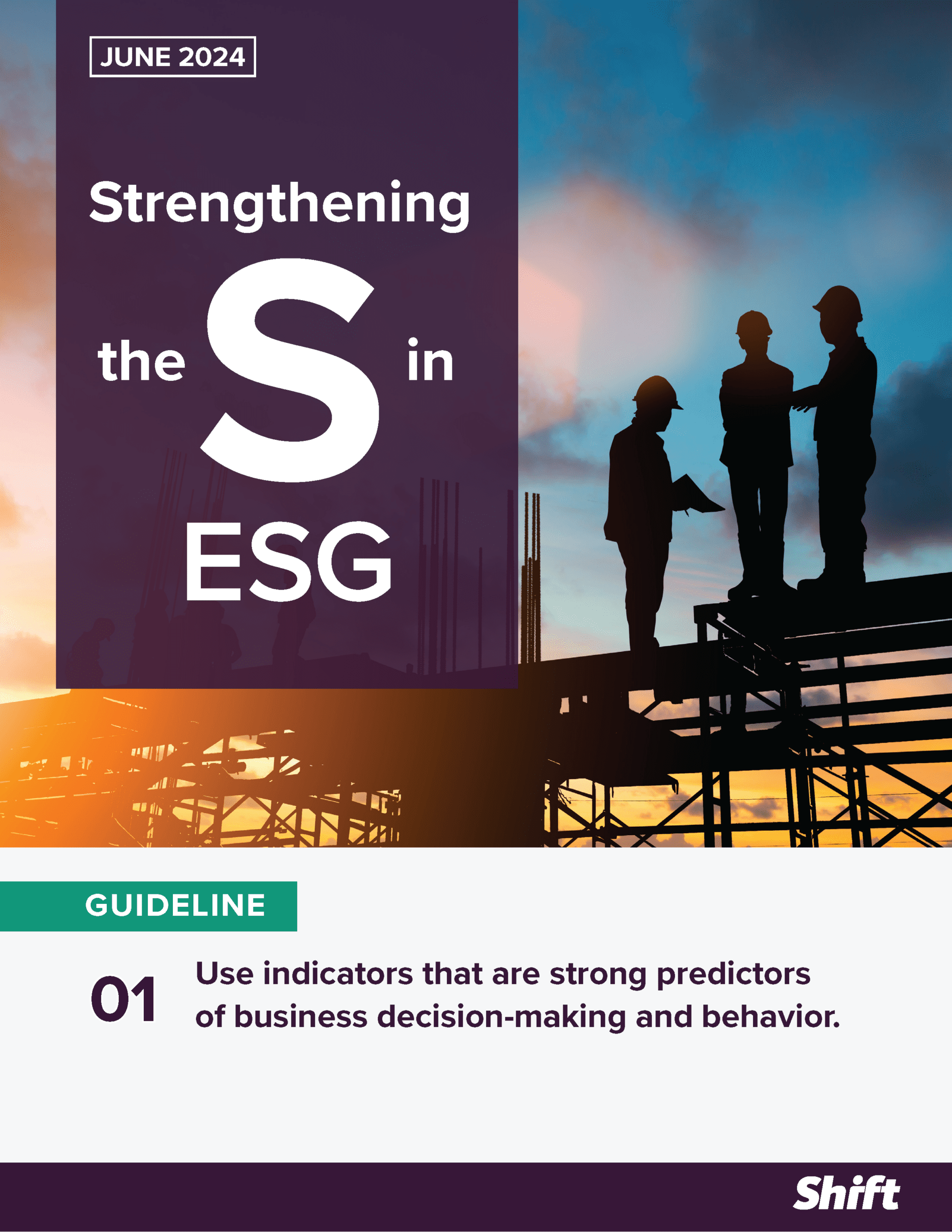
Introduction to Guideline 01: Use indicators that are strong predictors of business decision making and behavior.
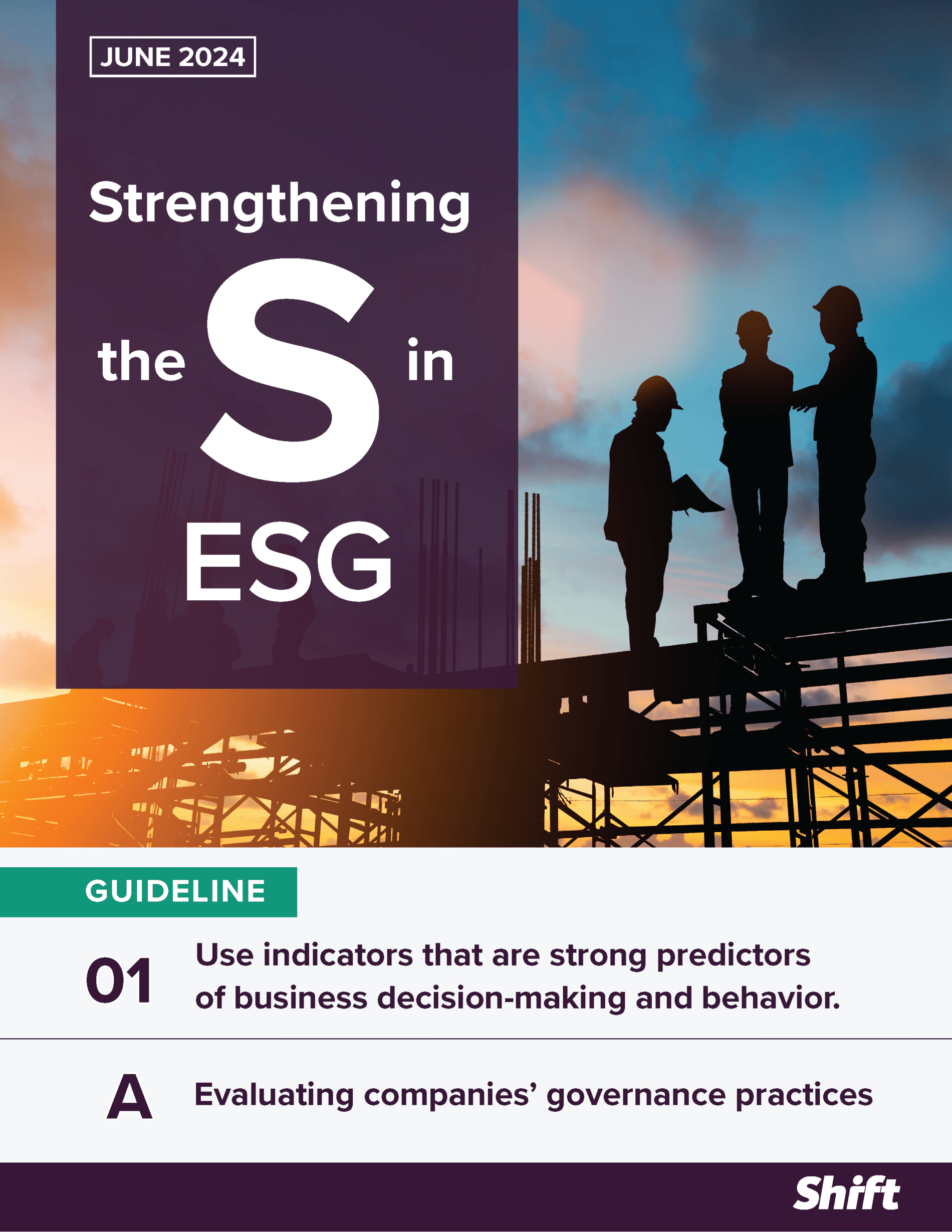
Guideline 1: Use indicators that are strong predictors of business decision making and behavior.
A: Evaluating companies’ governance practices
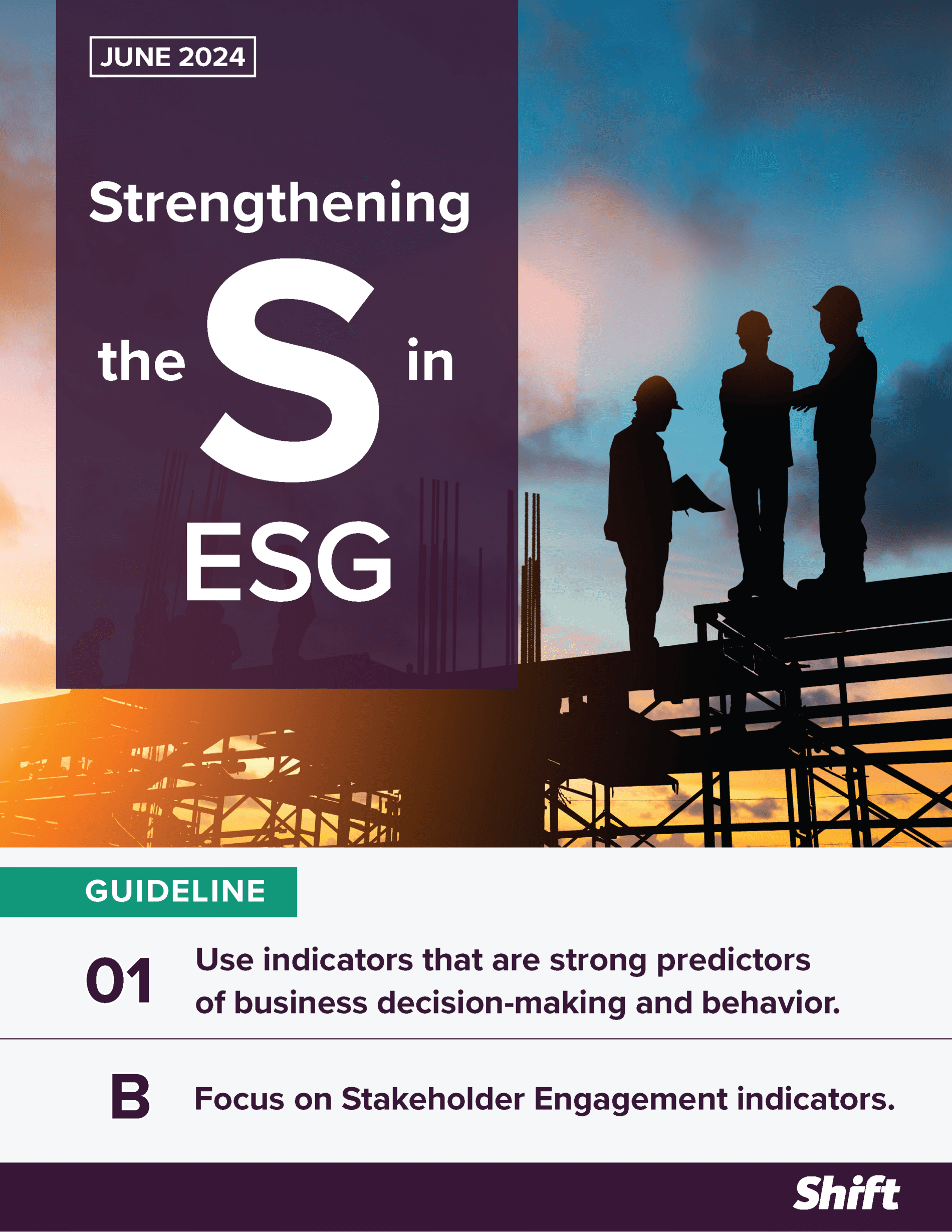
Guideline 1: Use indicators that are strong predictors of business decision making and behavior.
B: Focus on Stakeholder Engagement indicators.
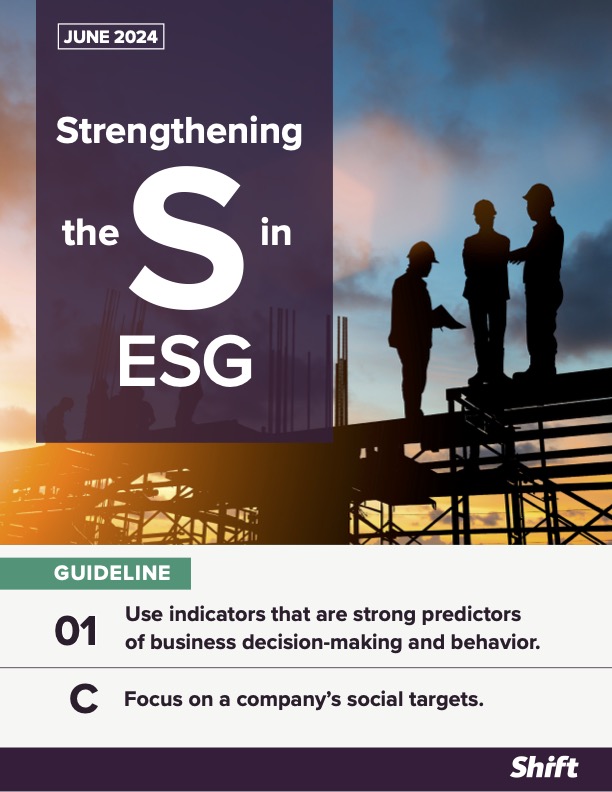
Guideline 1: Use indicators that are strong predictors of business decision making and behavior.
C: Focus on a company’s social targets.
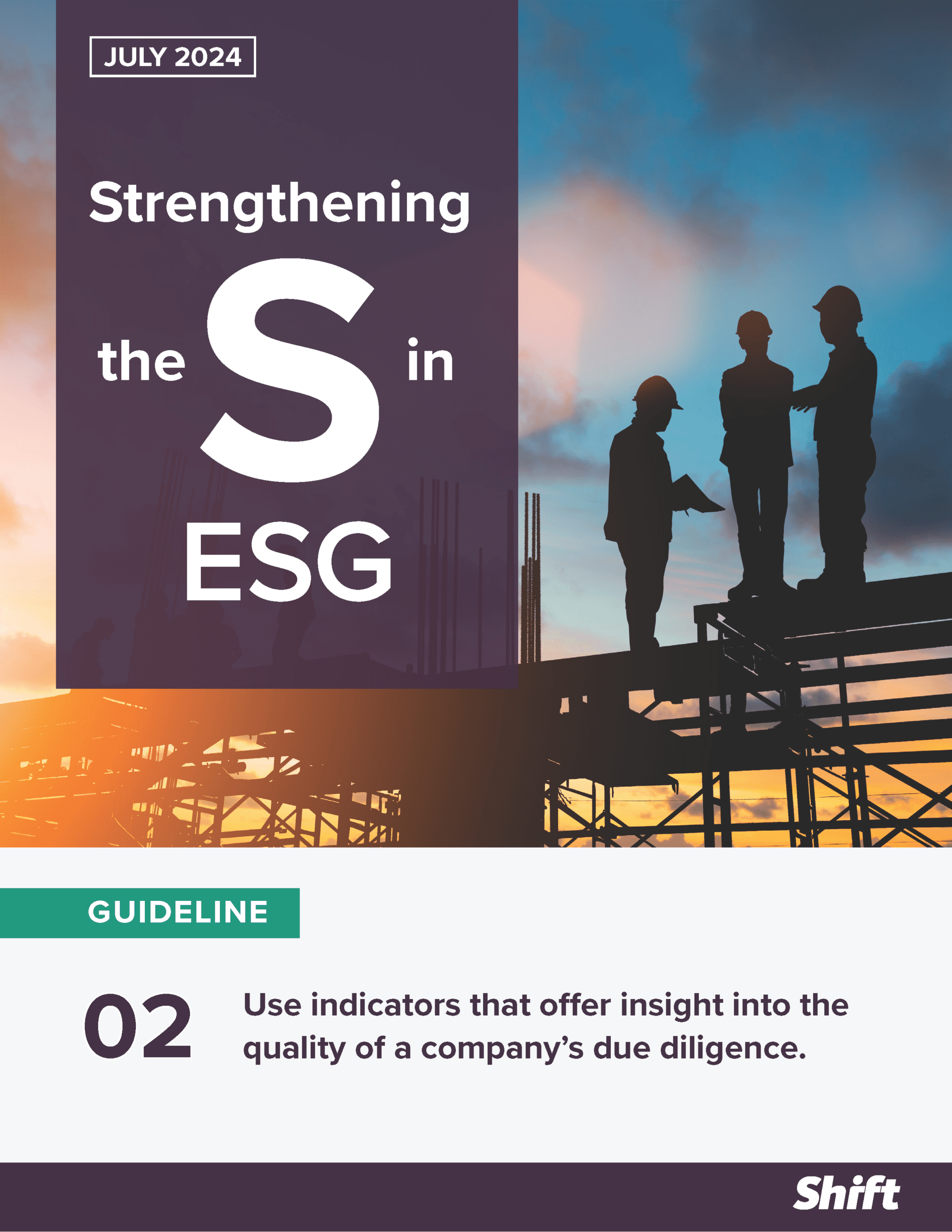
Guideline 2: Use indicators that offer insight into the quality of a company’s due diligence.
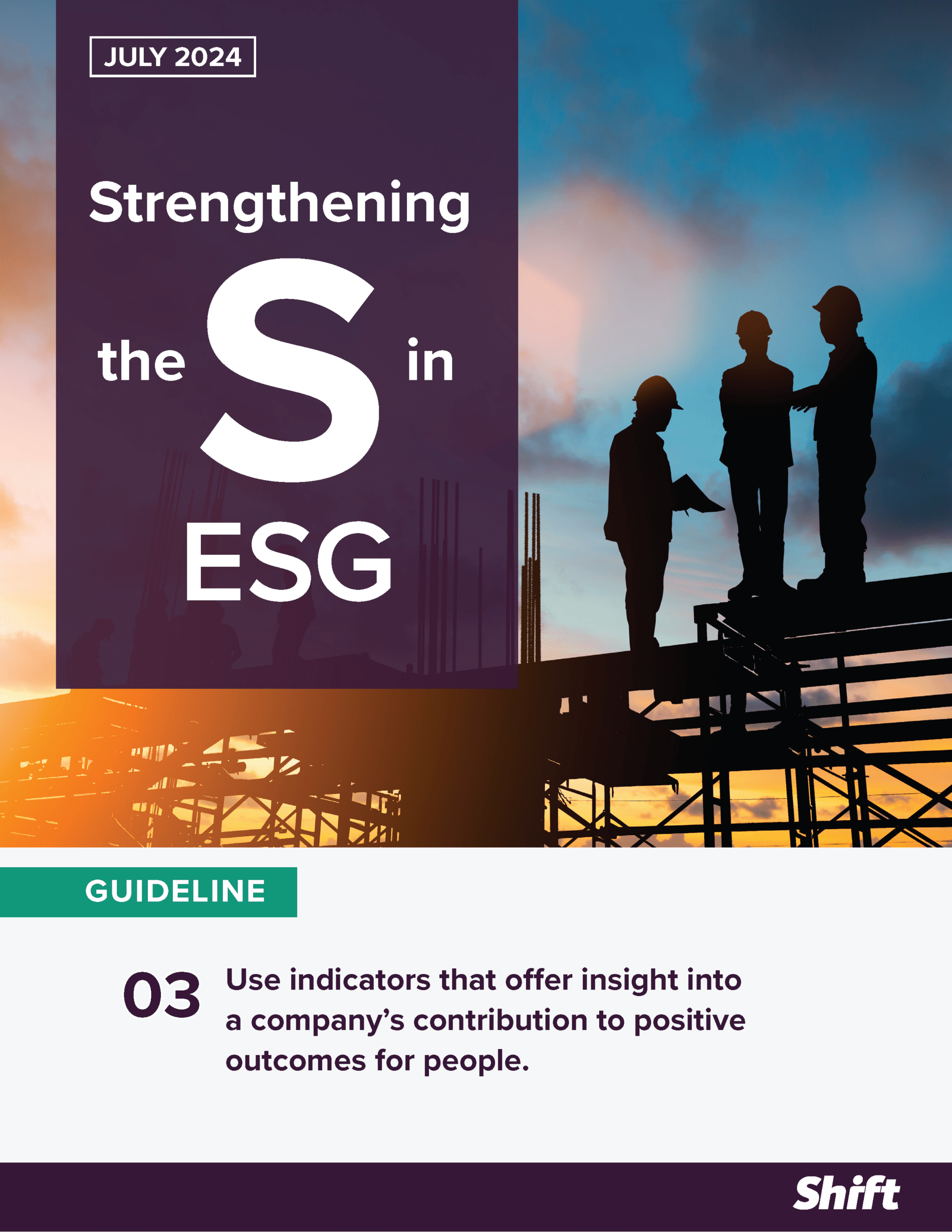
Guideline 3: Use indicators that offer insight into a company’s contribution to positive outcomes for people.

Advancing the S in ESG
The field of sustainability and responsible business conduct is faced with a significant opportunity: to coalesce around a core set of select, standardized indicators and metrics that meaningfully measure companies’ social performance regardless of their industry sector. This is key to equipping investors, business leaders, regulators and civil society with the tools to push to scale business practices that are in line with the principle of basic dignity and equality for all.
Success will significantly contribute to tackling inequalities, ensuring business actions towards net zero and net positive have the social license to proceed at the urgent pace required, and adapting business models and global value chains so that they deliver resilience to businesses and the stakeholders they impact. Failure risks ushering in more, already well-catalogued business-related harms and risks to people, planet and prosperity, likely with evermore multi-generational consequences.
The good news is that most stakeholders have embraced the pressing need for convergence around corporate sustainability reporting standards, including the indicators and metrics against which companies should disclose information and that should be used to evaluate corporate performance. Even better, recent institutional coordination and collaboration has set the stage for well-governed and inclusive processes needed to achieve such convergence.
Barriers to strengthening the S in ESG
Any ambitious project has risks that need managing. The challenge of building consensus across diverse stakeholders around indicators and metrics that offer credible insight into a company’s social performance is no exception.
Some risks are the consequence of positive dynamics. For example, the welcome growing attention to the S in ESG has resulted in thousands of social indicators and metrics already being developed by mainstream data providers and more targeted ranking and rankings. But the risks is that in a bid to identify a smaller set of indicators, we select the most commonly used indicators, in spite of broad recognition that these may not be fit for purpose.
In addition, the urgent need to effect a step change in the scale and quality of corporate reporting and assessment on social issues also carries the risk that project timelines prevent us from interrogating the devil in the detail of indicator formulations, such as when indicators may have perverse, unintended consequences.
The consequence of such risks is more than inconvenience and frustration. We could end up with solutions that confuse decision-makers, reflect the lowest common denominator of thinking and practice, or fail to ward off critiques of blue-washing and corporate capture, but also of so-called woke capitalism.
[1] Shift was unable to verify whether the non-public indicators and metrics that we used for our analysis are the most up to date versions used by data providers at the time of writing (April 2024). We also recognize that the underlying methodologies used to reach a judgement on a company’s performance against an indicator may offer more nuance that we could not access for our research.
Navigating this series
This resource was published by Shift Project on October 31, 2025
Related work to Strengthening the S in ESG

November 2024 |
Understanding Impact Materiality: ESRS Reporting for Financial Institutions
Learn more
April 2024 |
Frequently Asked Questions about the EU Corporate Sustainability Due Diligence Directive
Learn moreThanks for signing up.
